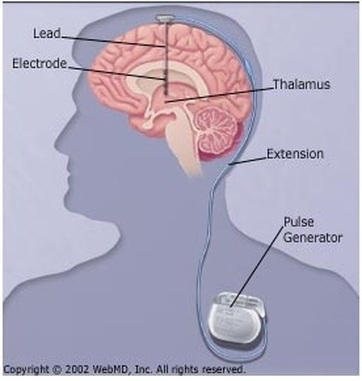It is generally accepted that dynamic changes resulting from the death of cells in the substantia nigra, a region of the midbrain, that lead to a dopamine deficit, underlie Parkinson's disease.
 Deep brain stimulation of the subthalamic nucleus is a well-established treatment for the motor symptoms of Parkinson's disease, but it is still poorly understood how subthalamic stimulation modulates the state dynamics of the brain's motor network. A biological network represents systems as complex sets of relationships between various biological entities.
Deep brain stimulation of the subthalamic nucleus is a well-established treatment for the motor symptoms of Parkinson's disease, but it is still poorly understood how subthalamic stimulation modulates the state dynamics of the brain's motor network. A biological network represents systems as complex sets of relationships between various biological entities.
To investigate this, the authors of a new paper acquired functional resting-state magnetic resonance imaging time series data from 27 drug-free patients with Parkinson's disease who had brain stimulation electrodes. deep deployed in the subthalamic nucleus, in activated and deactivated states of stimulation. Sixteen matched healthy people were included as a control group.
In this paper, scientists adopted a modeling approach known as the hidden Markov model, to highlight the emergence of recurrent activation patterns of interacting motor regions via the oxygen level-dependent signal in blood detected in resting-state functional magnetic resonance of all participants. The hidden Markov model includes the dynamics of distinct states of the whole-brain motor network, including frequency of occurrence, duration, fractional coverage, and their transition probabilities between different states.
Notably, subthalamic stimulation reshapes network expression and stabilizes state transitions. In addition, subthalamic stimulation ameliorates motor symptoms by modulating transition trajectories between network states.
This modulating mechanism of subthalamic stimulation appears to have three significant effects: recovery, slowing, and remodeling effects. Significantly, recovery effects were correlated with improvement in subthalamic stimulation-induced tremor and postural symptoms.
Additionally, subthalamic stimulation was found to restore a relatively low level of functional connectivity fluctuation in all motor regions that is at a level close to that of healthy participants.
The authors' findings provide mechanistic insight and explanation of how subthalamic stimulation modulates motor symptoms in Parkinson's disease.
